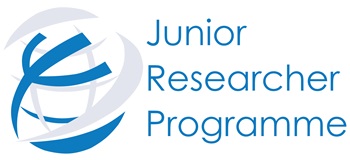 This paper lays out concrete foundations for the GHAP project by answering a simple question: Do people need and want medical travel? Yes. Not only that, but the particular circumstances that influence patient choices – including the destination country or the availability of follow-up care at home – are taken in consideration to paint a thorough image of medical travel. Insightful evidence for insightful policy-making? We think yes. Find the paper here, published by Frontiers in Public Health.
This paper lays out concrete foundations for the GHAP project by answering a simple question: Do people need and want medical travel? Yes. Not only that, but the particular circumstances that influence patient choices – including the destination country or the availability of follow-up care at home – are taken in consideration to paint a thorough image of medical travel. Insightful evidence for insightful policy-making? We think yes. Find the paper here, published by Frontiers in Public Health.
Abstract from the article
Background: Increased access to transportation and information has led to the emergence of more diverse patient choice and new forms of health care consumption, such as medical travel. In order for health care providers to effectively attract patients, more knowledge is needed on the mechanisms underlying decision-making of potential travelers from different countries. A particularly promising method of studying the travelers’ motives is collecting data on social media.
Objectives: The aim of this study was to test what factors influence decision-making of potential medical travelers and how these factors interact. Based on existing literature, the factors analyzed included quality, cost, and waiting time for 2 procedures varying in invasiveness across 12 different destination countries.
Methods: Decision-making patterns were examined using a pilot questionnaire that generated a large amount of data from over 800 participants in 40 countries. Participants indicated their willingness to travel given different scenarios. Each scenario consisted of a combination of several factors. Additionally, participants were asked to indicate the reasons for their choice.
Results: Individuals display high willingness to travel for medical care when combining all participants and scenarios, travel for care was chosen 66.9% of the time. Among the factors influencing their decisions, quality of the medical procedure abroad was considered most important, and cost was least important as shown by chi-square tests and corresponding odds ratios. Log-linear analyses revealed an interaction between time waiting in the local health care system and type of procedure, whereby time pressure increased the odds of agreeing to travel for the more invasive procedure. The odds of traveling to Europe and the USA were by far the highest, although participants indicated that under certain conditions they might be willing to travel to other medical destinations, such as Asia.
Conclusion: Our measurements yielded several reliable insights into the factors driving medical decision-making. An essential next step would be to expand these findings with a more encompassing sample and more elaborate statistical modeling.
Zhukovsky, P., Ruggeri, K., Garcia-Garzon, E., Plakolm, S., Haller, E., Petrova, D., Mahalingam, V. & Menezes, I. G. (2016). Global health policy and access to care: Investigating patient choice on an international level using social media. Frontiers in Public Health, 3, 284.
